When you plug your iPhone to computer, if you don’t see it under “Portable Devices” in Computer but see it in iTunes, the device is not recognized by PC successfully. The problem probably is caused by missing or corrupted iPhone driver. Follow the instructions in this post to troubleshoot and solve the problem. The steps apply to Windows 10, 7 & 8.
Firstly, check if the problem is caused by iPhone
Connect the iPhone to another PC and see if the problem persists. If the problem also occurs on another computer, the iPhone probably is broken. You might need to to take it to the repair shop to have it checked. If the iPhone is recognized by another PC, move on to follow the remaining instructions.
Secondly, check if the problem is caused by broken cable
To ensure successfully connectivity, it is recommended that you use original iPhone cable. Plug the iPhone using another cable and see if the problem persists. If the problem is still there, it mostly is caused by faulty drivers.
Thirdly, fix driver problems
Go to Device Manager to check for the driver status. Expand these categories and you will find the iPhone device under one of them:
Imaging Devices
Other Devices
Portable Devices
Universal Serial Bus Controllers
In most cases, the iPhone will be listed under “Portable Devices” (make sure your iPhone is connecting to computer). If the device can’t be recognized by PC, it can be listed under “Other devices” with a yellow mark. Follow solutions below to fix the driver problem.
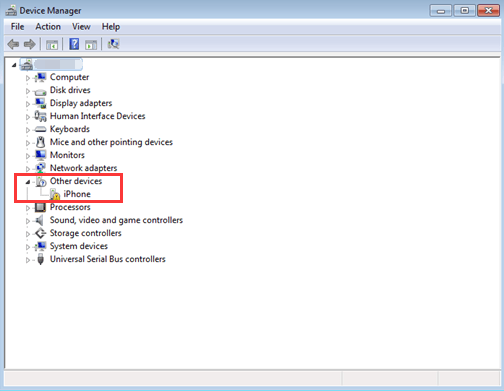
Uninstall the driver should resolve the problem
Follow these steps:
1. In Device Manager, right-click on the iPhone device and select Uninstall from the context menu.
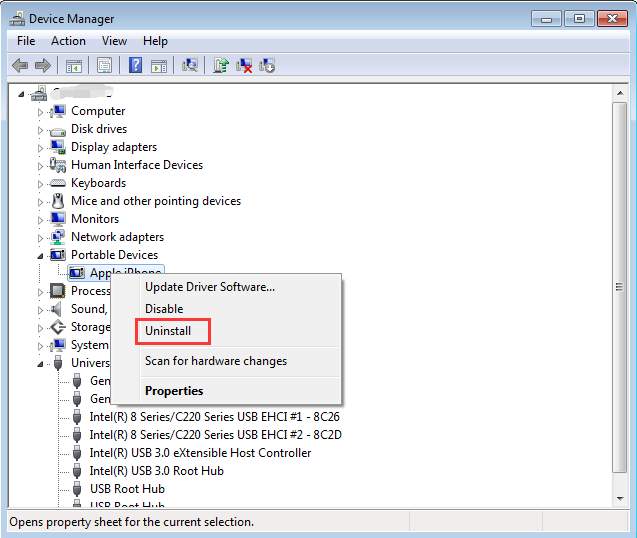
2. Click Action in top menu bar and select Scan for hardware changes from the drop-down menu.
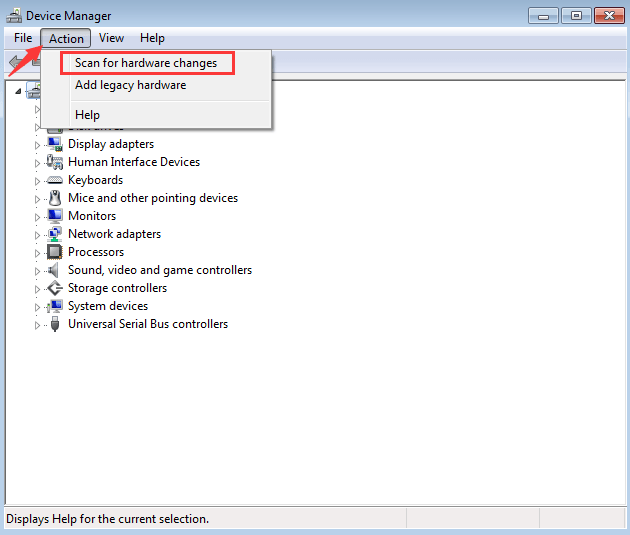
After that, you should see iPhone in Computer.
Update the driver
If the problem is still there, follow steps below to manually update the driver.
1. Right-click on the iPhone device and select Update Driver Software… from the context menu.

2. Click Browse my computer for driver software.
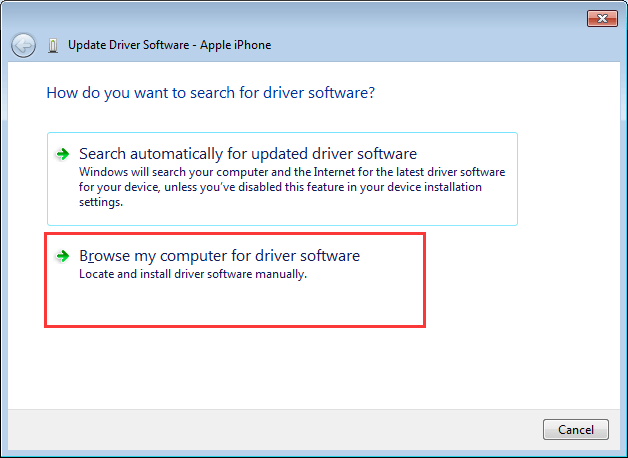
3. Click Let me pick from a list of device drivers on my computer.
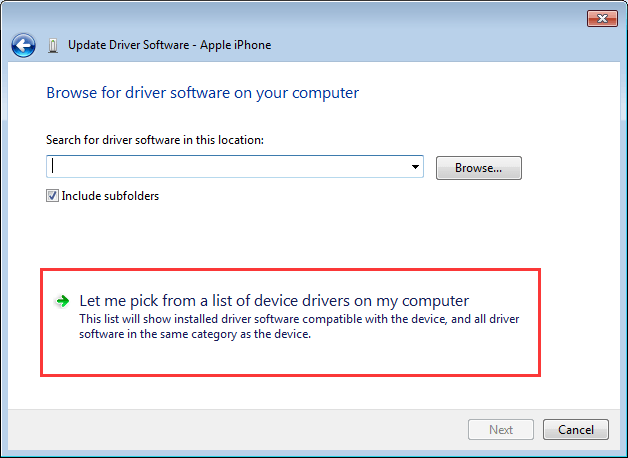
4. Click Have Disk….
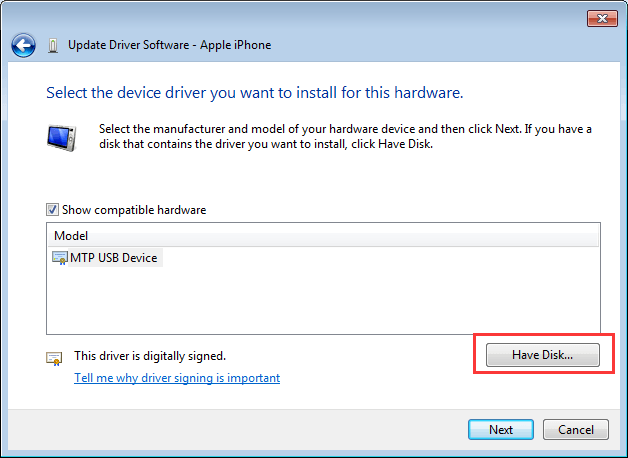
5. Click Browse… button.
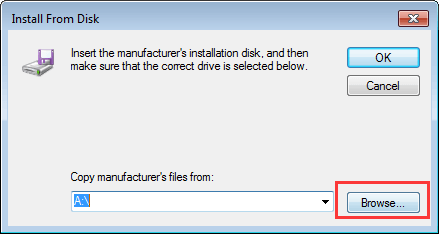
6. Navigate to C:\Program Files\Common Files\Apple\Mobile Device Support\Drivers. Select file “usbaapl64.inf”, then click Open button.
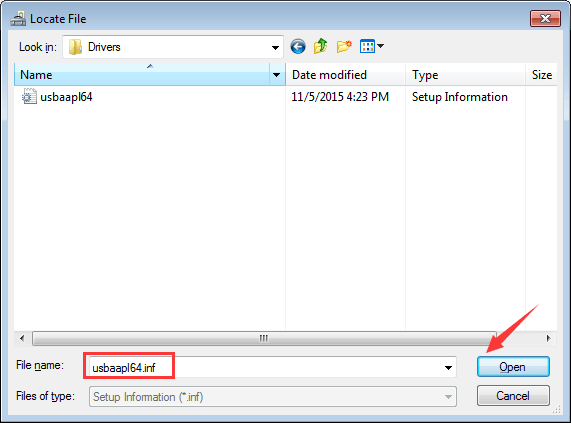
7. Click OK button.
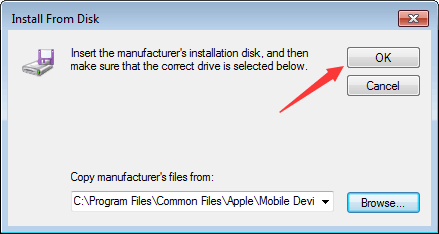
8. Click Next button. Then the driver will be installed automatically.

If the problem still can’t be resolved, you can consider using Driver Easy to update all drivers. If the problem is caused by faulty iPhone driver, Driver Easy can fix it quickly.
Driver Easy will automatically recognize your system and find the correct drivers for it. You don’t need to know exactly what system your computer is running, you don’t need to risk downloading and installing the wrong driver, and you don’t need to worry about making a mistake when installing.
You can update your drivers automatically with either the FREE or the Pro version of Driver Easy. But with the Pro version it takes just 2 clicks (and you get full support and a 30-day money back guarantee):
1) Download and install Driver Easy.
2) Run Driver Easy and click Scan Now. Driver Easy will then scan your computer and detect any problem drivers.

3) Click Update All to automatically download and install the correct version of all the drivers that are missing or out of date on your system (this requires the Pro version – you’ll be prompted to upgrade when you click Update All).

Hopefully you find this article helpful. If you have any questions, ideas or suggestions, feel free to leave a comment below.





